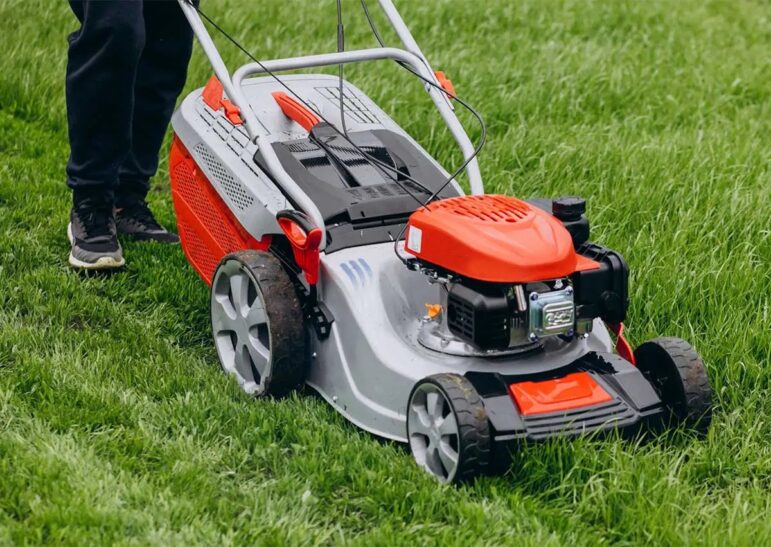Though recent snow and rainfall have certainly improved drought conditions, California water officials still want to make every drop of water count.
That means cutting out the watering of decorative grass — also known as non-functional turf — frequently landscaped at traffic medians or office parking lots.
Decorative grass is becoming a bigger problem for Western water agencies to address as policymakers look to cut back its water usage in statewide bans, proposed legislation and local ordinances.
Right before last summer’s sweltering heat, the California Water Resources Control Board set a statewide ban on irrigating non-functional turf with potable water in commercial, institutional and industrial sectors, also known as CII sites. Businesses could still irrigate their turf with recycled water, though the board recommended to prioritize watering trees and switching to low-water landscaping instead.
According to researchers from the Pacific Institute, a water research nonprofit, converting grass to drought-suitable landscapes on CII sites could reduce water needs by 70 percent to 80 percent, and save the state between 340,000 and 400,000 acre-feet of water a year.
Water suppliers and local governments are on the hook to enforce the ban with fines up to $500 a day.
So, how do many Western water districts identify non-functional turf? It differs, but in general, if only the lawnmower steps foot on it, it’s probably unnecessary to water.
Lisa Cuellar, Director of Programs at the California Water Efficiency Partnership, a state agency that focuses on water efficiency and conservation, said the ban revealed some issues with tree mortality and irrigation management. Often, trees selected to be planted around non-functional turf are not drought resistant themselves, and the irrigation schedule only accommodates to the turf’s needs. This causes the trees to develop a shallow root system over time, which can make it more difficult for them to survive.
“It creates a problem,” said Cuellar at a webinar on non-functional turf. “If we were to just completely cut off the irrigation, the trees are likely to suffer.”
As the state’s water supply is projected to decrease by 10 percent by 2040 and plants are needing more water to stay alive in dry conditions, Cuellar said that shifting away from traditional landscaped lawns is just one way to conserve water.

“If landscapes really remain as they are, this is going to translate to a significant increase in irrigation demand, especially for turfs across the entire state,” Cuellar said.
A new bill introduced in February would permanently set the board’s ban into place and expand to landscapes on multifamily residential land. Authored by California Assembly Member Laura Friedman, D-Glendale, Assembly Bill 1572 would require owners to certify compliancy with the provision by 2025 and allow cities and counties to begin enforcement.
“It does paint a picture that California is taking on functional turf very seriously,” said Cuellar.
Some water districts are already ahead of the game, like the Bay Area’s Marin Municipal Water District, which prompted a ban last March that prohibits non-functional turf with all forms of water, drinkable or not.
“With the water shortage conditions we were experiencing, there was a realization that putting even recycled water onto non-functional turf was not a good use of that water supply,” said Carrie Pollard of Marin Water.
In Marin Water’s district area, 9 percent of turf areas on CII sites, or 250 locations total, are considered non-functional, said Pollard. Now that they are identified, the district plans to inform customers in the coming months and recommend that they participate in their turf rebate programs.
“We have this list, we know where they are, we know how much turf area these sites have,” Pollard said. “Now it’s our opportunity to pursue and engage with these folks to get them to convert these areas.”
Board officials concluded that the ordinance reduces the amount of water used for outdoor irrigation, which makes up half of the district’s water supplies, and preserves water for more essential uses.
“One challenge is getting to the right person to make the decision to convert the landscape,” said Pollard. “Often times a commercial water bill will go to ‘accounts payable’ and not to the owner or someone who has the authority to make significant changes to the site.”
After seeing two intense dry summers back-to-back, the district’s board also voted to prevent decorative grass from being landscaped in the first place. Now, any new or rehabilitated landscaping projects at commercial or municipal sites within a certain number of square feet have to undergo review, and turf areas are only approved on a case-by-case basis.
The next steps for the district are finding additional grant funding for their rebate program, refine their implementation plan and develop an enforcement policy.
“While we do want to encourage conservation through direct incentives, we don’t have a deadline of when the turf needs to be removed,” Pollard said. “We want to incentivize folks to move remove this, but we can’t do that until our post drought funding constraints have been addressed.”
Alameda County offers water use and resource-friendly guidelines for decorative landscaping HERE.
